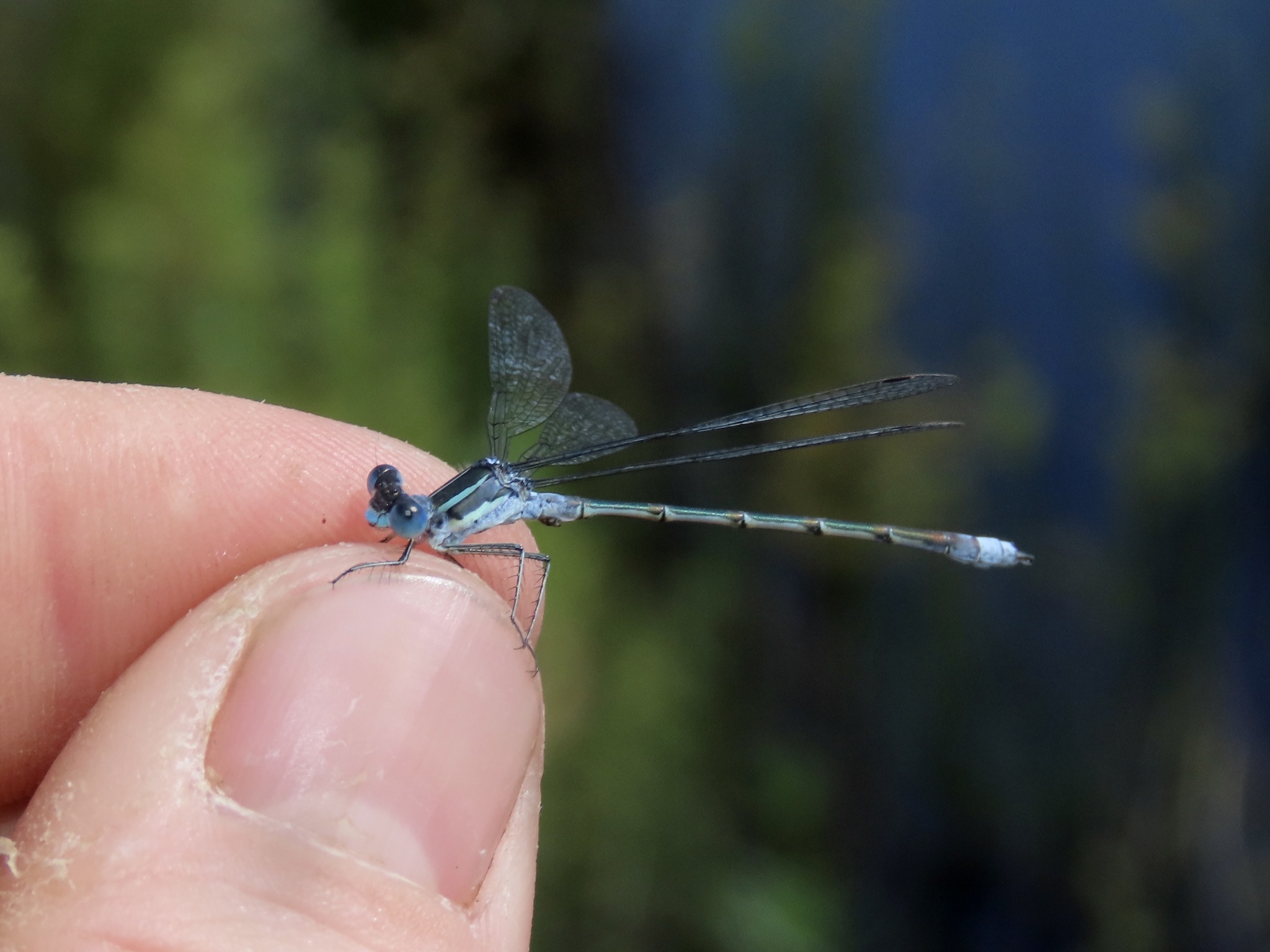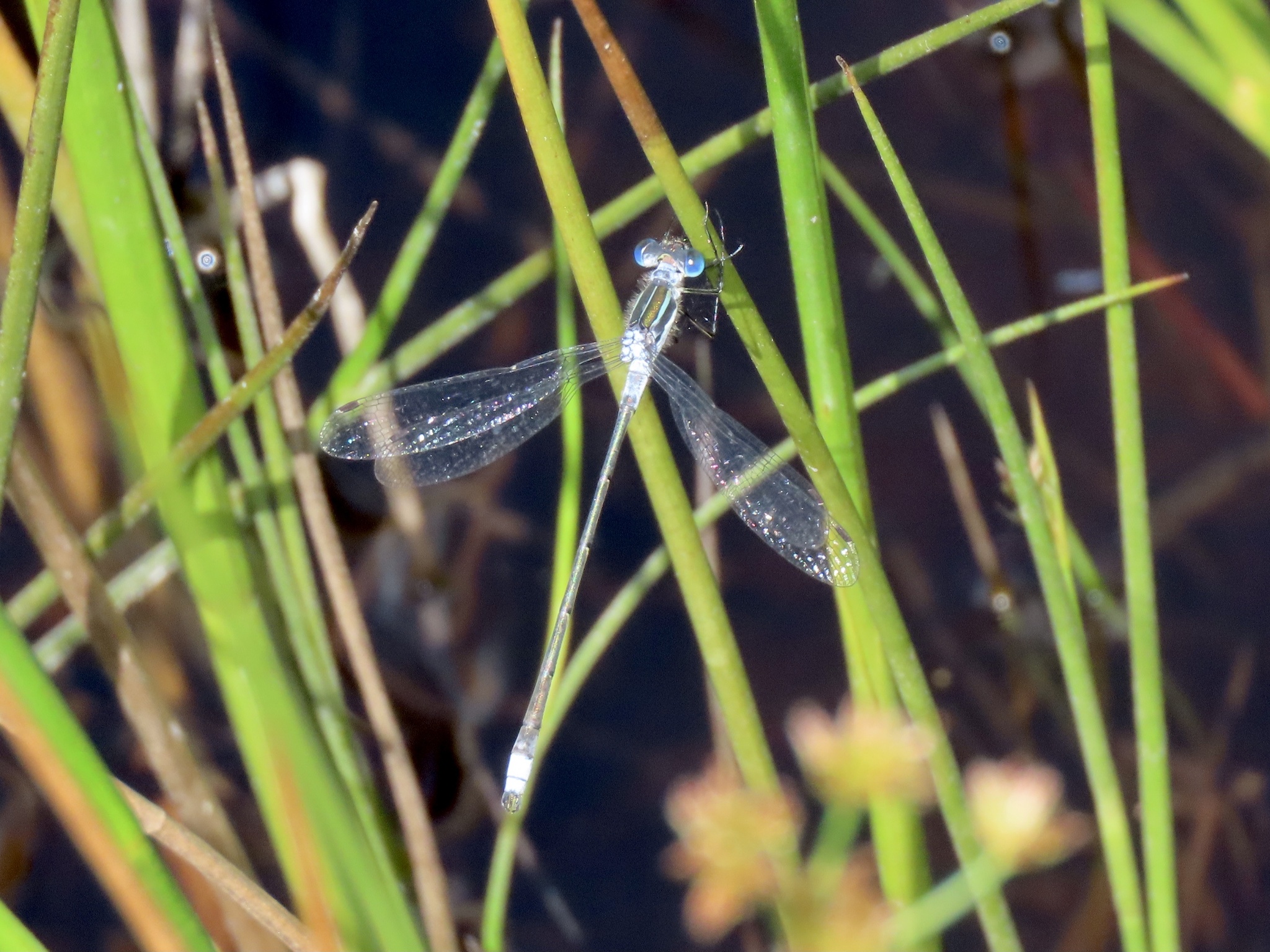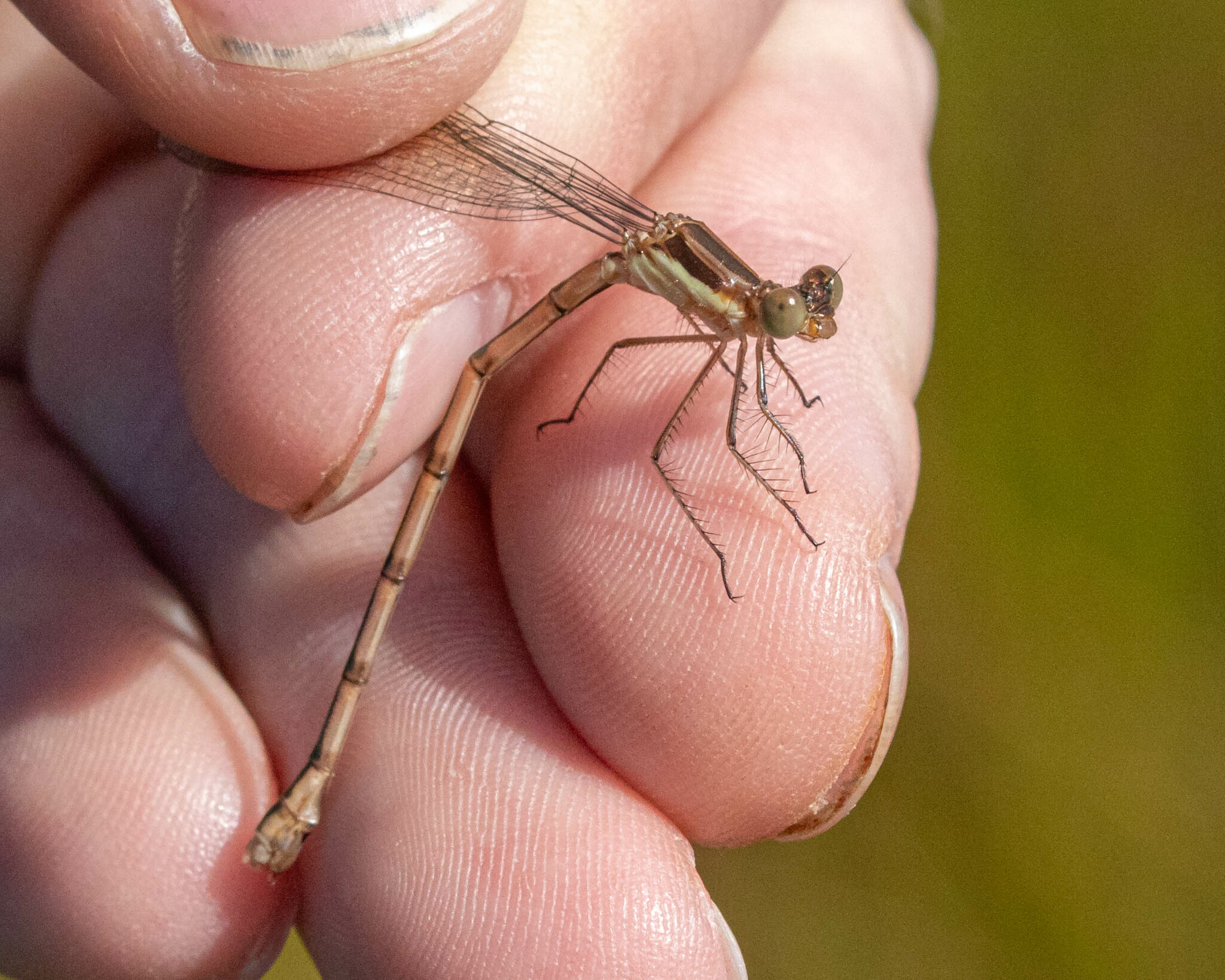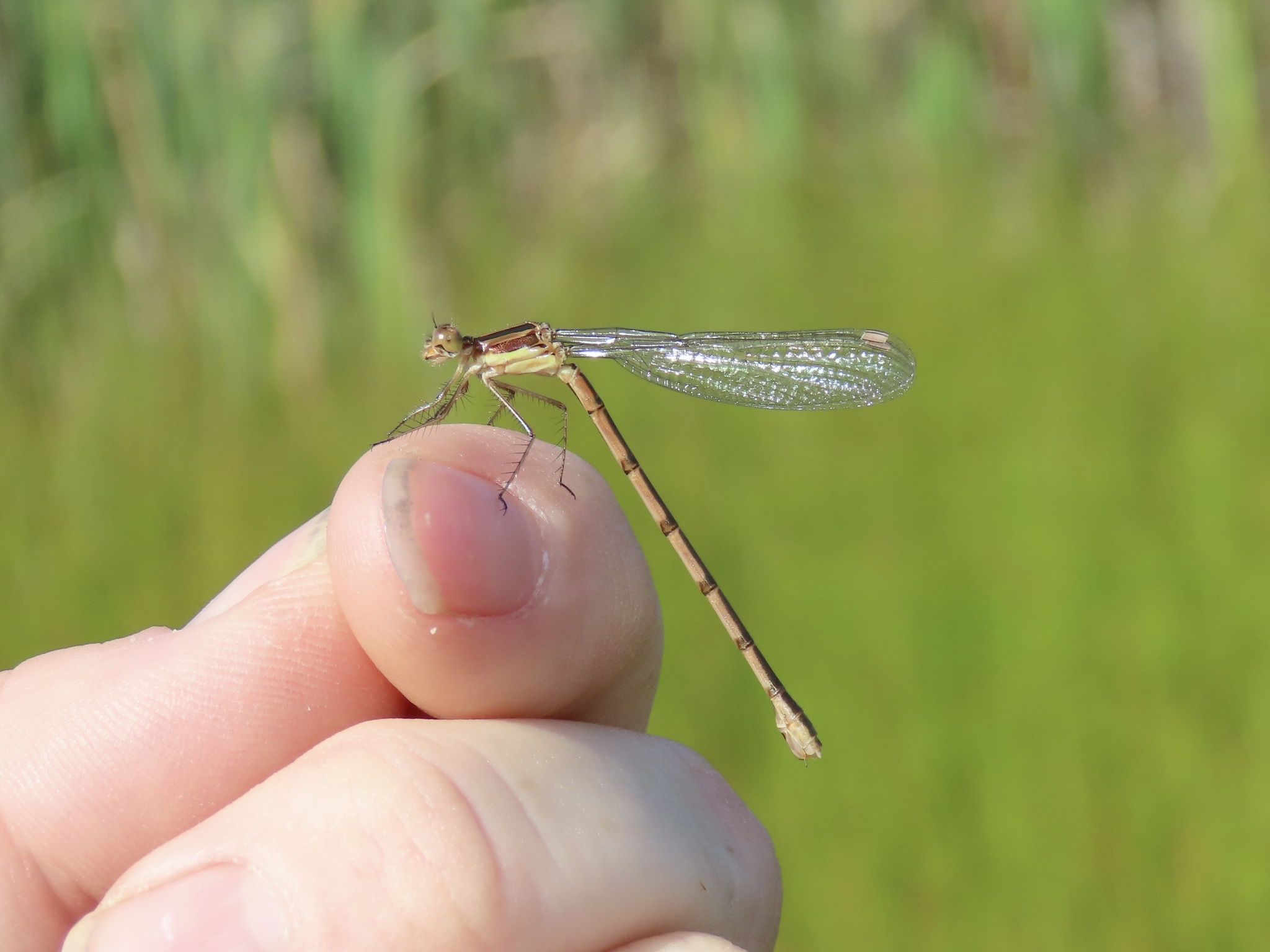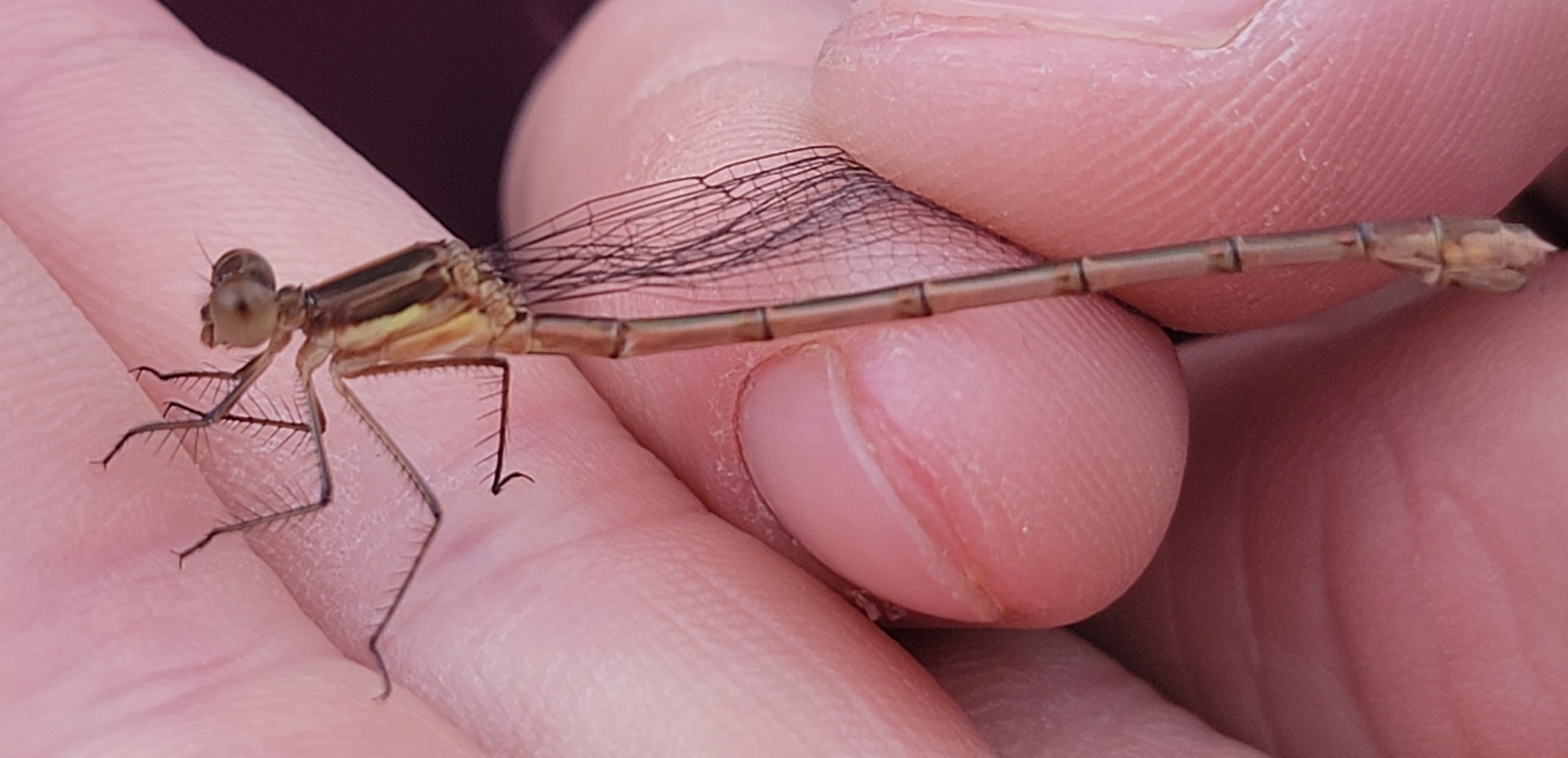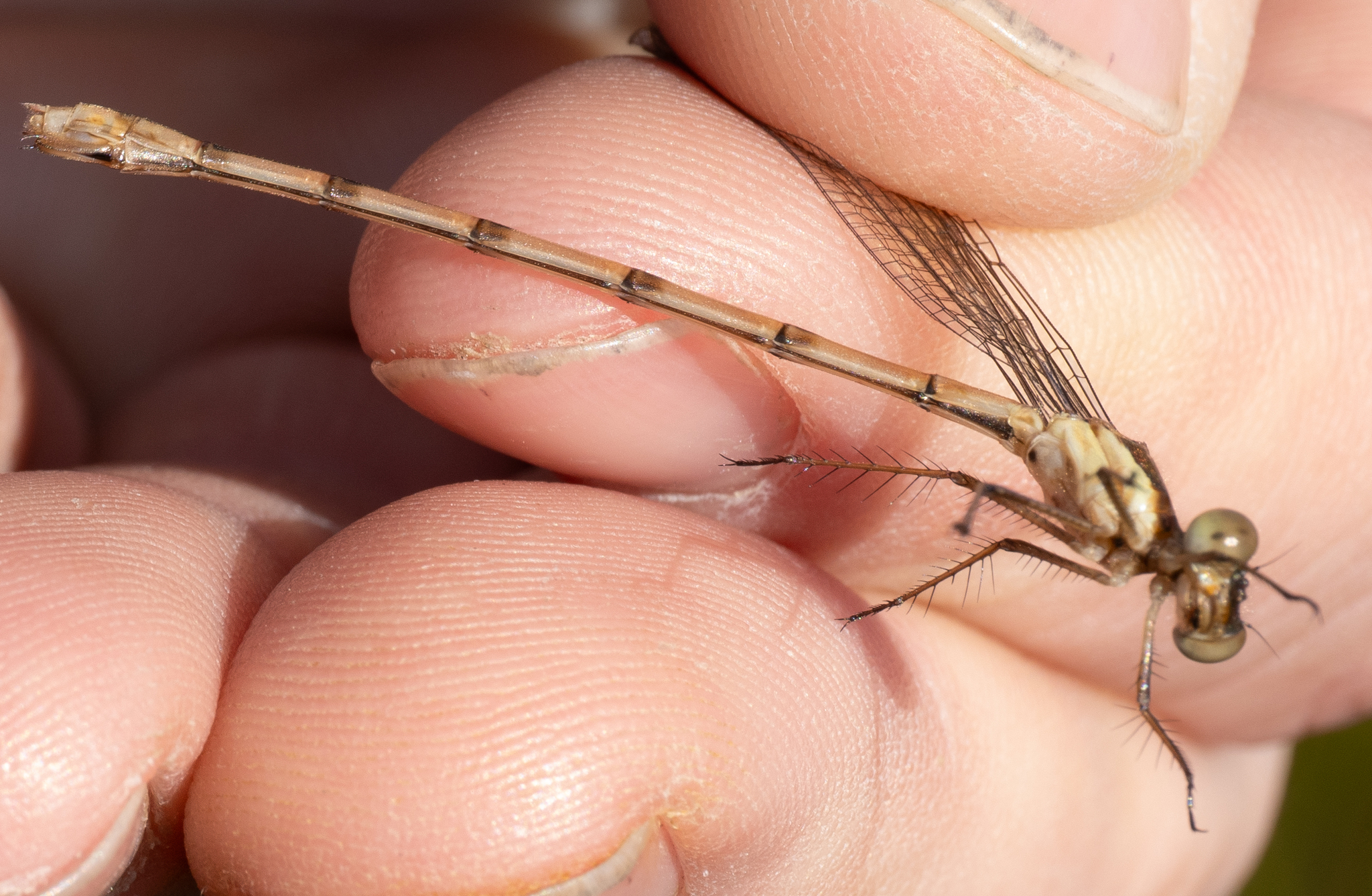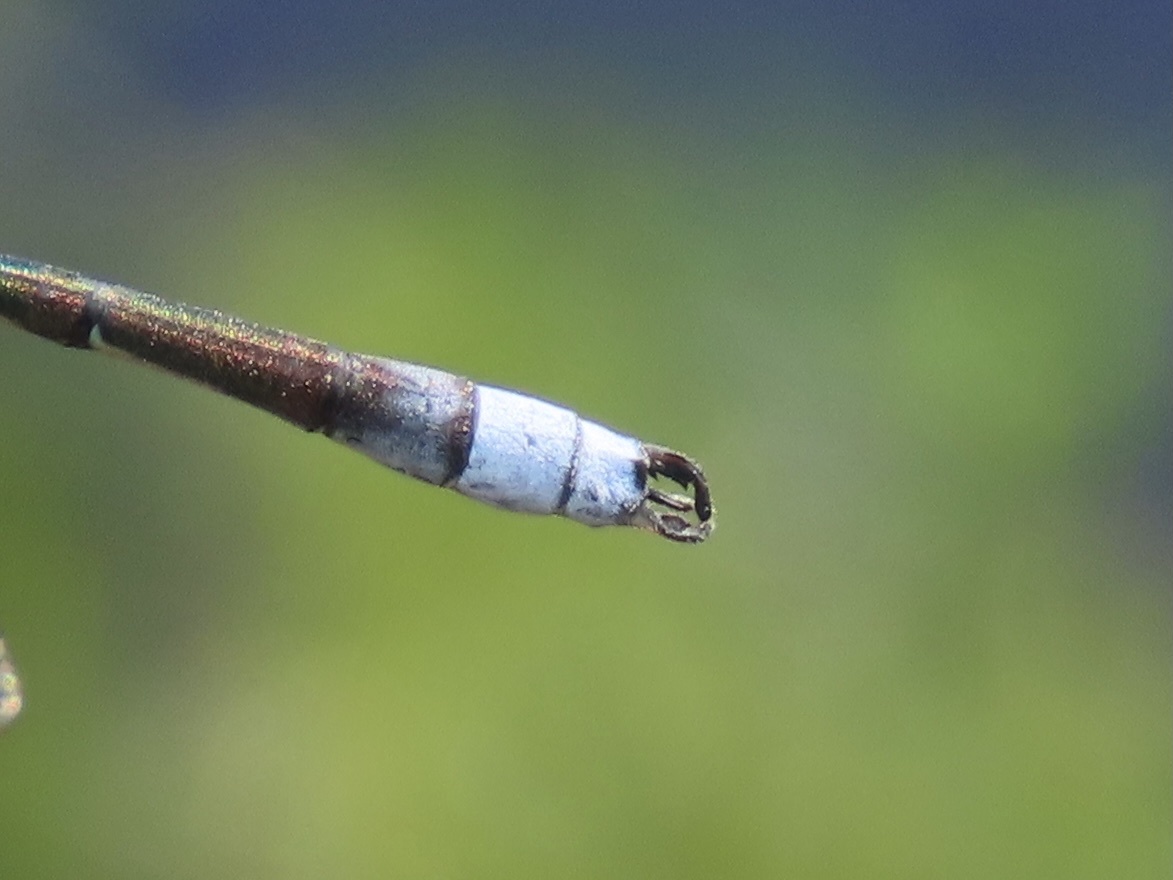Map Snapshot





68 Records
Status
Northern Spreadwing (Lestes disjunctus), as its common name implies, is mostly northern in distribution. In Maryland, it is known only from ponds and lakes in Garrett Co. This species is part of a difficult complex which also includes which also includes Southern Spreadwing (Lestes disjunctus) and Sweetflag Spreadwing (Lestes forcipatus). Care should be taken to separate from the others, preferably in the hand (Paulson, 2001)(Lam, 2004).
Seasonality Snapshot
Source: Wikipedia
| Lestes disjunctus | |
|---|---|

| |
| Scientific classification | |
| Domain: | Eukaryota |
| Kingdom: | Animalia |
| Phylum: | Arthropoda |
| Class: | Insecta |
| Order: | Odonata |
| Suborder: | Zygoptera |
| Family: | Lestidae |
| Genus: | Lestes |
| Species: | L. disjunctus
|
| Binomial name | |
| Lestes disjunctus Selys, 1862
| |
Lestes disjunctus, the northern spreadwing, is a species of spreadwing in the damselfly family Lestidae. It is found in North America.[2][3][1][4]
The IUCN conservation status of Lestes disjunctus is "LC", least concern, with no immediate threat to the species' survival. The population is stable. The IUCN status was reviewed in 2017.[1][5][6]
References
[edit]- ^ a b c Paulson, D.R. (2017). "Lestes disjunctus". IUCN Red List of Threatened Species. 2017: e.T51364327A65836794. doi:10.2305/IUCN.UK.2017-3.RLTS.T51364327A65836794.en. Retrieved 11 November 2021.
- ^ "Lestes disjunctus Report". Integrated Taxonomic Information System. Retrieved 2020-01-25.
- ^ "Lestes disjunctus". GBIF. Retrieved 2020-01-25.
- ^ "Lestes disjunctus species Information". BugGuide.net. Retrieved 2020-01-25.
- ^ "Odonata Central". Retrieved 2019-07-02.
- ^ "World Odonata List". Slater Museum of Natural History, University of Puget Sound. 2018. Retrieved 2019-07-02.
Further reading
[edit]- Kalkman, V. J. (2013). Studies on phylogeny and biogeography of damselflies (Odonata) with emphasis on the Argiolestidae (PhD). Leiden University. hdl:1887/22953.
External links
[edit] Media related to Lestes disjunctus at Wikimedia Commons
Media related to Lestes disjunctus at Wikimedia Commons Data related to Lestes disjunctus at Wikispecies
Data related to Lestes disjunctus at Wikispecies
